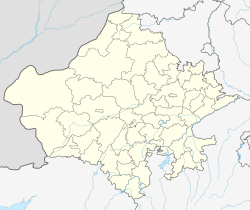Jeen Mata | |
|---|---|
Village | |
 Jeen Mata Temple idol in Sikar District | |
| Coordinates: 27°26′39″N75°11′40″E / 27.444154°N 75.194457°E | |
| Country | |
| State | Rajasthan |
| District | Sikar |
| Named after | Jeen Mata |
| Languages | |
| • Official | Hindi |
| Time zone | UTC+5:30 (Indian Standard Time (IST)) |
| PIN | 332406 |
| Vehicle registration | RJ-23 |
| Lok Sabha Constituency | Sikar |
Jeen Mata is a village located in the Sikar district of Rajasthan, India. It is famous for the ancient and revered Jeen Mata Temple, which is dedicated to the goddess Jeen Mata, believed to be a form of the Shakti deity. The village is approximately 29 kilometers south of Sikar city and about 108 kilometers northwest of Jaipur. [1] [2] [3]




